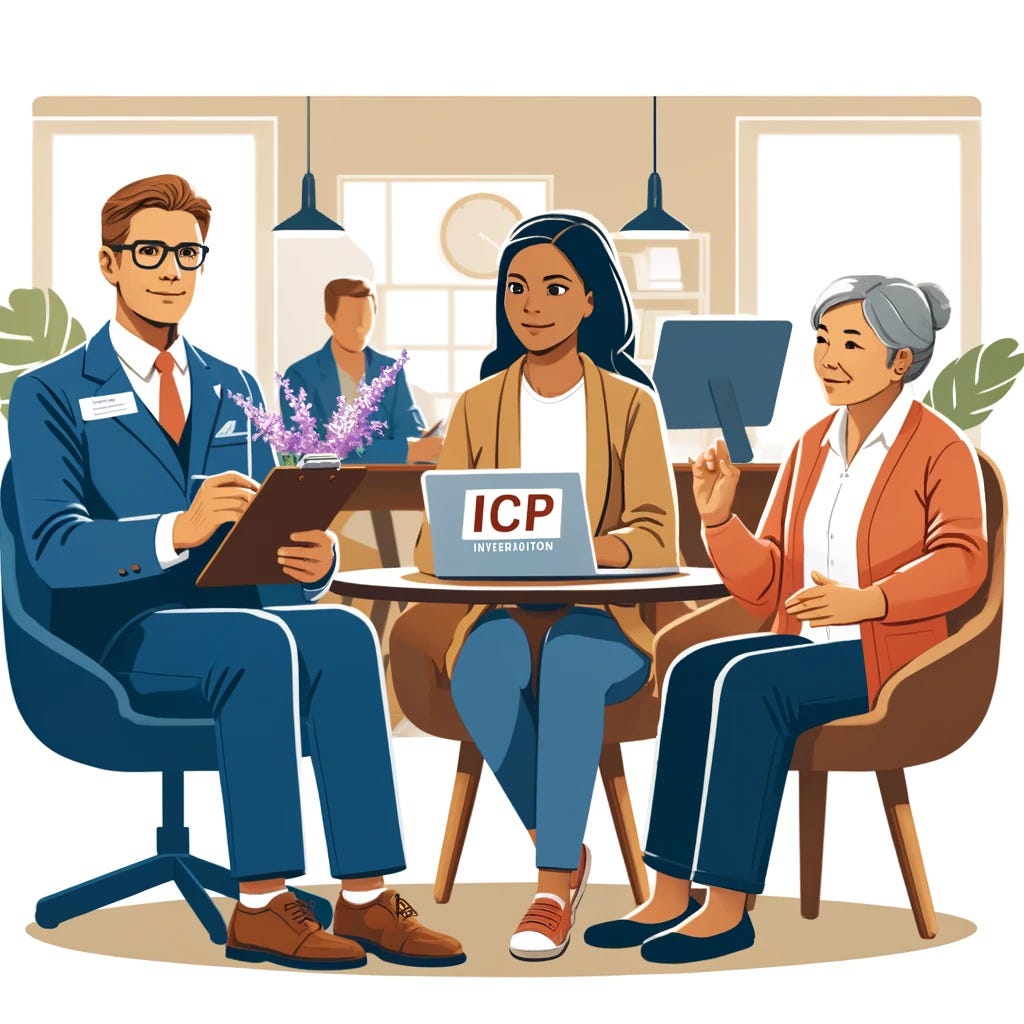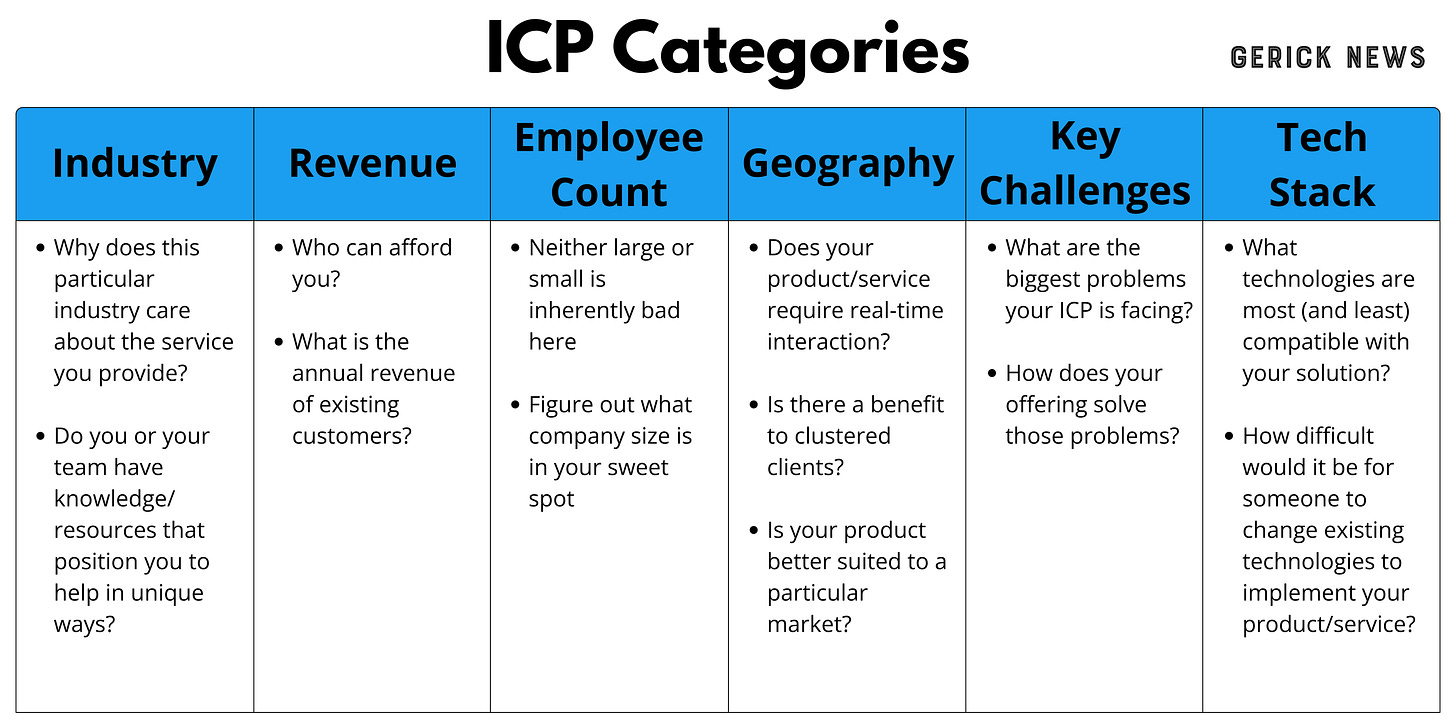Welcome to Part I of Edition No. 76 of my weekly newsletter, providing practical analysis in the world of digital content strategy.
Who is Your Ideal Customer?
We know what an ICP is and what purpose it serves. Now it’s time to talk about how to define your ideal customer profile, which will set you up to put that knowledge into practice.
Remember, this doesn’t mean you don’t work with clients/customers outside your ICP. Rather, this is an exercise to show you where you should invest most of your time to get the customer with the highest revenue potential combined with the least amount of effort/convincing.
I’m going to use a hypothetical product to provide examples for each of these steps.
The product will be an AI-powered copy-editing tool that integrates with Slack and WordPress to keep writers and editors abreast of feedback and changes to their work.
1. Choosing Categories
Before you research your ideal customer profile, you need to know what information you’re seeking. While there is some flexibility here, these are the typical characteristics you want to define.
(Remember, except for B2C or peer-to-peer businesses, an ICP is determined at the company level, not the individual level.)
a. Industry
Why does this particular industry care about the service you provide?
Do you or your team have knowledge/resources that position you to help in unique ways?
Example: You choose the news industry because of its dependence on strong copy editing, and its shortage of reliable employees to complete this task.
b. Revenue
This may be difficult to determine. What you really want to know is who can afford you.
Is there a tangible benefit for companies of X size working with you?
Example: You choose newsrooms that rely on paid subscriptions and have at least 1,000 MAUs. This not only provides them with a reliable income stream, but makes it more likely they’ll be able to use you in the long-run.
c. Employee Count
Too small of a company and they may not benefit from your product
Too large and it may be too difficult to get buy-in to make significant changes
You may, in fact, prefer a very small – or large – company. In any case, figure out what company size is in your sweet spot
Example: Newsrooms with 10-20 full-time employees is ideal. This indicates they’re probably shorthanded on editors, as opposed to large national and international outlets that have hundreds of employees and are less likely to adopt your product.
The 10-20 range also means they’re large enough that there are frequent internal communications and it’s not just two or three full-time employees emailing and chatting directly.
d. Geography
Will your clients/customers require a high volume of real-time support/interaction? Then don’t target someone 10 time zones away
Are you more successful when multiple clients are close to each other? Then choose a region with a high concentration of potential customers
Perhaps your product is self-serve and physical location doesn’t matter. Then you might what to consider which region’s affluence is best suited to your offerings
Example: Your product is only available in English (for now!) so you need to focus on English-speaking countries. The U.S., Canada, England and Australia seem like the best candidates. Since you’re based in the U.S. – and there are many newsrooms that fit the other characteristics you seek – that’s where you focus.
e. Key Challenges
What are this company’s biggest problems? They should align with your offerings to be considered an IC
Example: Publishing factual news with minimal errors is more important than ever. At the same time, budgets are thin and full-time editors are hard to come by. Your tool may not be as valuable as a full-time human, but it catches most errors a human would at a fraction of the cost.
f. Tech Stack
Is your solution compatible with the technology they’re using?
Will they need to make and changes to existing technology – or add new tech – to use your offering?
Example: You’ll target newsrooms that are already on Slack and WordPress. While you may integrate with other CMSs in the future, WP is the most popular in the industry and gives you the biggest chance of success.
2. Collecting Data
Now that you know the characteristics that would determine your ICP, you need to figure out how you’ll collect that info.
To do this, you can use a combination of software programs as well as by interviewing your team internally.
a. Data Sources
Your CRM
For characteristics about the company
For a detailed historial record of your outreach, interactions and working relationship
Google Analytics 4 (or other on-site analytics platform)
To analyze their behavior
b. KPIs
(For additional insights, analyze these KPIs by cohorts.)
Revenue/Acquisition Metrics
Acquisition velocity
Deal cycle time
Logo/customer churn rate (over a period of time)
Average contact length
Customer lifetime value (CLV)
Product usage time (if you have a product)
Hours billed (if you provide a service)
Percent of gross revenue
Revenue per channel
Market penetration
NPS
Website/App Metrics
Time on site/app
Keep reading with a 7-day free trial
Subscribe to Gerick News(letter) to keep reading this post and get 7 days of free access to the full post archives.





